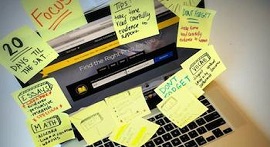Academics
Massachusetts Institute of Technology, the East Coast mecca of engineering, science, and mathematics, “is the ultimate place for information overload, endless possibilities, and expanding your horizons.” The “amazing collection of creative minds” includes enough Nobel laureates to fill a jury box as well as brilliant students who are given substantial control of their educations; one explains, “The administration’s attitude toward students is one of respect. As soon as you come on campus, you are bombarded with choices.” Students need to be able to manage a workload that “definitely push[es you] beyond your comfort level.” A chemical engineering major elaborates: “MIT is different from many schools in that its goal is not to teach you specific facts in each subject. MIT teaches you how to think, not about opinions but about problem solving. Facts and memorization are useless unless you know how to approach a tough problem.” Professors here range from “excellent teachers who make lectures fun and exciting” to “dull and soporific” ones, but most “make a serious effort to make the material they teach interesting by throwing in jokes and cool demonstrations.” “Access to an amazing number of resources, both academic and recreational,” “research opportunities for undergrads with some of the nation’s leading professors,” and a rock-solid alumni network complete the picture. If you ask “MIT alumni where they went to college, most will immediately stick out their hand and show you their ‘brass rat’ (the MIT ring, the second most recognized ring in the world).”
Student Body
“There actually isn’t one typical student at MIT,” students here assure us, explaining that “hobbies range from building robots and hacking to getting wasted and partying every weekend. The one thing students all have in common is that they are insanely smart and love to learn. Pretty much anyone can find the perfect group of friends to hang out with at MIT.” “Most students do have some form of ’nerdiness’” (like telling nerdy jokes, being an avid fan of Star Wars, etc.), but “contrary to MIT’s stereotype, most MIT students are not geeks who study all the time and have no social skills. The majority of the students here are actually quite ’normal.’” The “stereotypical student [who] looks techy and unkempt…only represents about 25 percent of the school.” The rest include “multiple-sport standouts, political activists, fraternity and sorority members, hippies, clean-cut business types, LARPers, hackers, musicians, and artisans. There are people who look like they stepped out of an Abercrombie & Fitch catalog and people who dress in all black and carry flashlights and multi-tools. Not everyone relates to everyone else, but most people get along, and it’s almost a guarantee that you’ll fit in somewhere.
Campus Life
At MIT, “it may seem…like there’s no life outside problem sets and studying for exams,” but “there’s always time for extracurricular activities or just relaxing” for those “with good time-management skills” or the “ability to survive on [a] lack of sleep.” Options range from “building rides” (recent projects have included a motorized couch and a human-sized hamster wheel) “to partying at fraternities to enjoying the largest collection of science fiction novels in the United States at the MIT Science Fiction Library.” Students occasionally find time to “pull a hack,” which is an prank, “like the life-size Wright brothers’ plane that appeared on top of the Great Dome for the one-hundredth anniversary of flight.” Undergrads tell us, “MIT has great parties—a lot of Wellesley, Harvard, and BU students come to them,” but also that “there are tons of things to do other than party” here. “Movies, shopping, museums, and plays are all possible with our location near Boston. There are great restaurants only [blocks] away from campus too.... From what I can tell, MIT students have way more fun on the weekends than their Cambridge counterparts [at] Harvard.”




